
The lost rivers that lie beneath London London map, Lost river, London underground stations
061123 Why do Thames Water not collect the 15 . Three meter lengths of blue plastic fencing, and old pipes etc. They left here for the last TWO Years, these cause an obstruction,as they halfway lying in the road,as no footpath down this road, and the cars going and exiting the park are getting damaged, also the public are in Grave Danger when trying to avoid your rubbish and the danger of your.
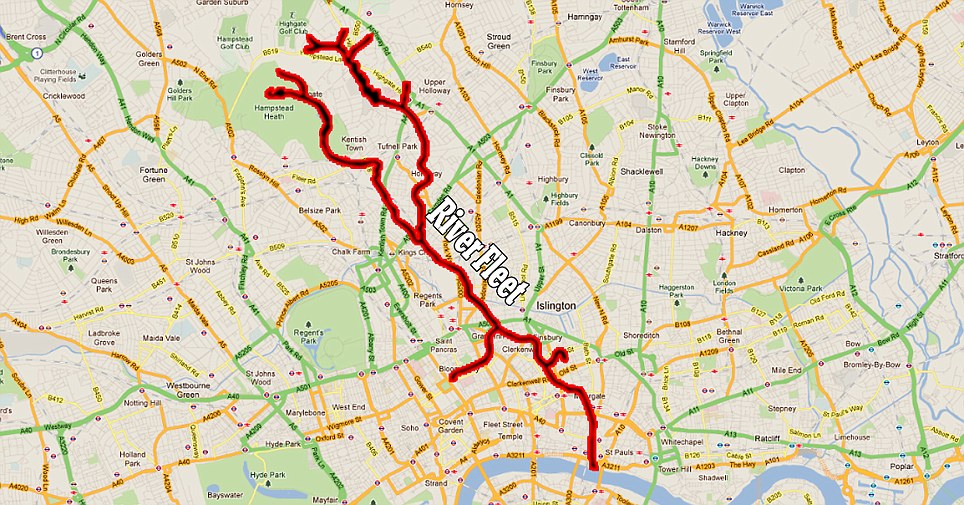
Thames Blog 39 Lost Rivers of London Glen Chilton
The River Fleet gave its name to Fleet Bridge (first referenced in 1197) and Fleet Street, also known as Fleet Bridge Street for a time.. River Fleet on London map c. 1270. This map depicts the west half of London in 1270. The River Fleet can be seen running west of the city wall until it eventually meets the Thames. Fleet Bridge, Fleet.
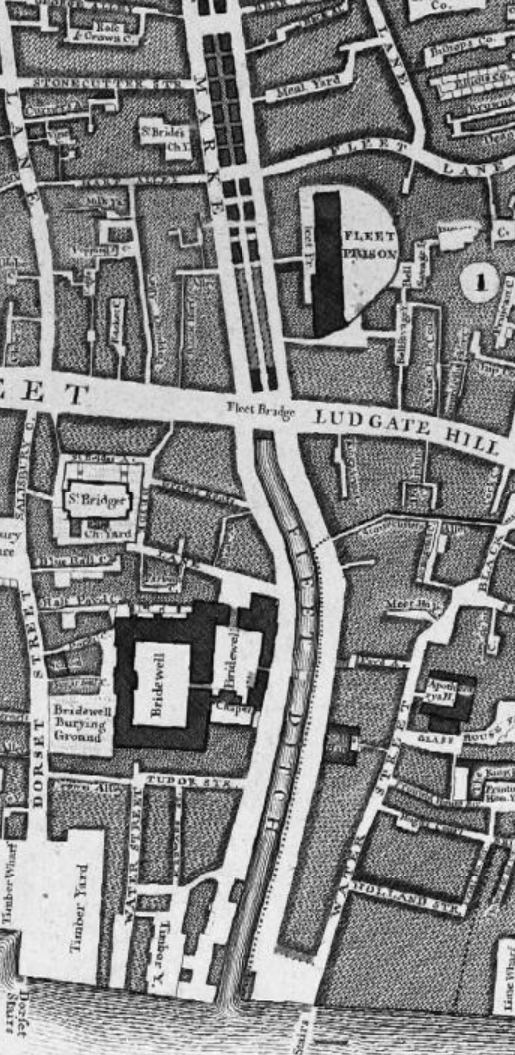
London in the 1800s and before the original River Fleet
River Fleet Coordinates: 51°30′39″N 0°6′16″W Entrance to the Fleet River as it emerges into the Thames, by Samuel Scott, c. 1750 The southern reaches of the Fleet, flowing beneath Holborn Bridge and Fleet Bridge, past Bridewell Palace, and into the Thames, as shown on the "Copperplate" map of London, surveyed between 1553 and 1559

London 1834, Fleet River from Highgate Ponds to Kentish Town London map, Vintage maps
River Fleet Map River Fleet Self Guided Walking Tour River Fleet History FAQs About the Lost River Fleet in London The River Fleet runs for 3.7 miles from Hampstead Health to the River Thames at Blackfriars. Although most of the river now runs underground, it is still possible to walk the original route of the river.

London 1834, Fleet River in Camden Town Antique maps, London map, London history
The Fleet is a tributary of the River Thames, and flows six kilometers from its start as two streams in Hampstead Heath, past Camden Town, King's Cross, and Clerkenwell, to where it eventually empties into the Thames near Blackfriars Bridge. Though now hidden from view underground, the Fleet was a prominent part of life in medieval London.
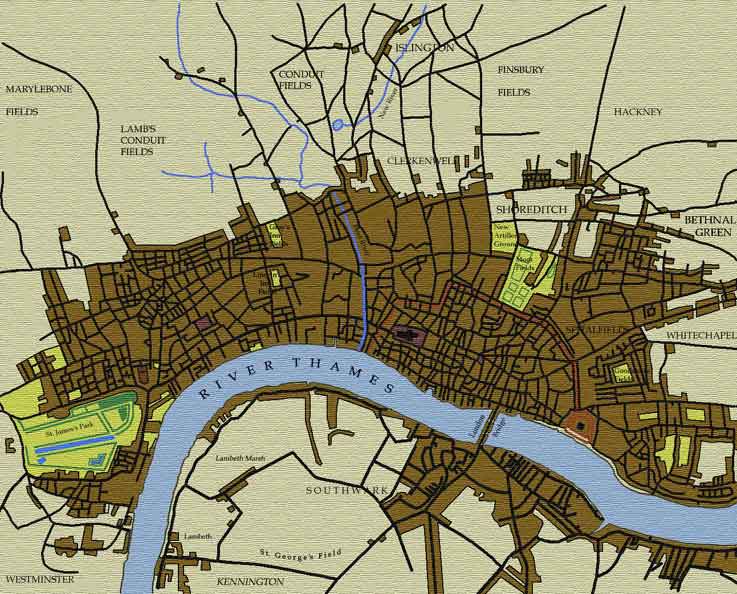
The Fleet River
The River Fleet is the most famous and largest of London's subterranean rivers. The Fleet arises on Hampstead Heath as two sources, which still flow on the surface as the Hampstead Ponds and the Highgate Ponds. Then they go underground, pass under Kentish Town, join in Camden Town, and flow onwards towards St Pancras Old Church, which was.
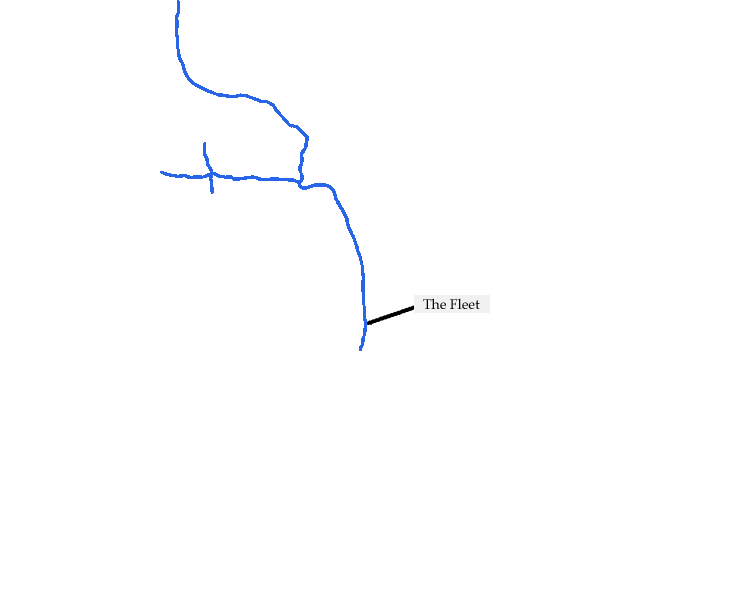
The Fleet River
The Lost River Fleet: A Self-Guided Walk And Map August 5, 2021 / All posts, Churches, Hidden Gems, Parks and Gardens, Self-Guided Walks London has many 'lost' rivers, that have played a huge role in defining the landscape of the city: the hills, the valleys, the shapes of roads.

River Fleet CSO, London Thread Urban Exploration Resource
The River Fleet is London's most famous, most notorious, and most mysterious 'Lost' River. It rises on Hampstead Heath and has two sources. One is in Kenwood where it flows down the East side of the Heath feeding the Highgate Ponds.

‘Dung, Guts and Blood’ a wander up the lower reaches of London’s Fleet River past tense
In the above map, note at the centre of Ludgate Circus the "Fleet Bridge, site of" annotation which refers to the bridge over New Canal (Fleet River) built by Christopher Wren in 1680. Also note the Snow Hill (now Thameslink) tunnel tracks just east of the Circus, with City Thameslink station since built at the south east quadrant.

HandDrawn Maps The River Fleet Londonist
The most famous is the river Fleet - once a mighty waterway to rival perhaps even the Thames, now a trickle of water in a storm drain that runs under the city, but the story of it's transformation gives us flashes of London history that paint a vivid picture of how our home has evolved Curious?
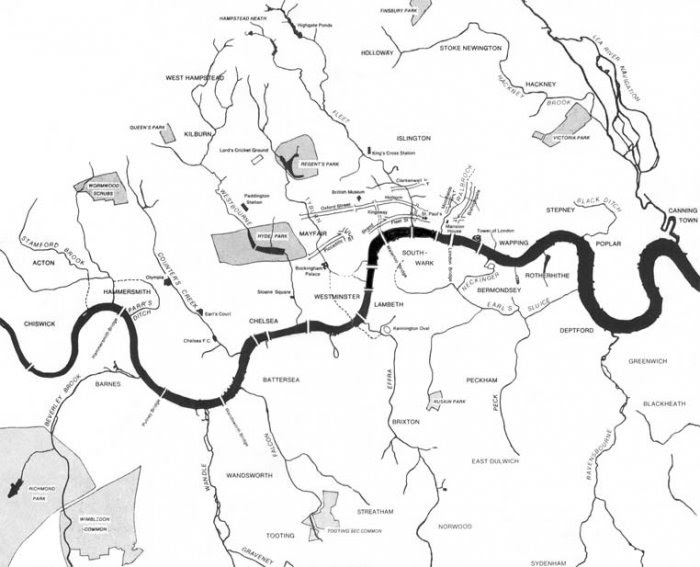
Ed Fordham The Fleet river floweth by...
The Fleet's headwaters are springs and (artificial) ponds between Hampstead and Highgate, and streams, which join at Kentish Town, flow down to St Pancras and onwards, in a deeper valley through Holborn. The Fleet emerges at the Thames in a gully between the two cities of London and Westminster.

Pin on 3M Data Visualization
The illustrations run the gamut beyond the map above which highlights rivers buried and open at the time, along with historical images such as woodcuts, here below of the Fleet River in 1825 and River Tyburn in 1750 (between pages 32-33)
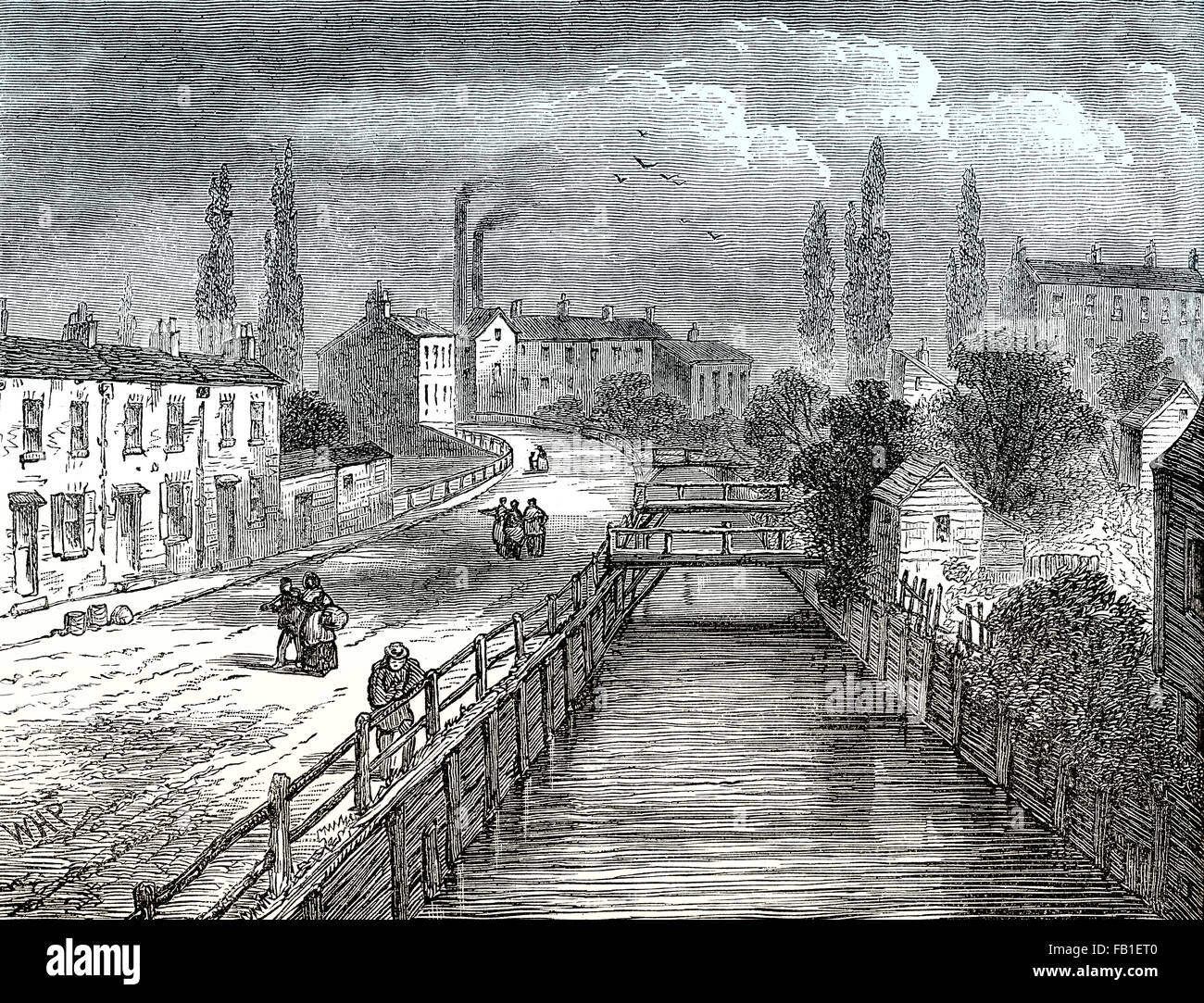
The Fleet River at Battle Bridge, near King's Cross, 1810, London, UK Stock Photo, Royalty Free
London's lost rivers. River Fleet - Became polluted as Smithfield butchers threw remains of dead animals into the river, and was eventually incorporated into the sewer system. River Tyburn.
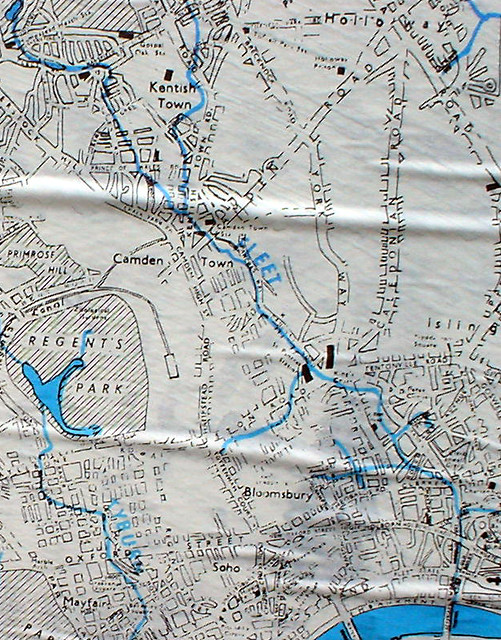
Map of the River Fleet Flickr Photo Sharing!
The Fleet used the flow through the centre of London until it was covered up in the 1700's, much of it becoming a sewer. Nowadays only parts of it are visible near the source at Hampstead. Despite the lack of actual river, walking the route is a nice couple of hours through some interesting parts of the city.

London 1720, showing Fleet River London map, Old maps of london, London map drawing
Fleet River can be heard rushing by underneath a grate at Ray Street, Farringdon near the Coach and Horses pub, and through a grid in the center of Charterhouse Street where it joins Farringdon.

The Dutch fleet, River Medway Stock Image C019/5509 Science Photo Library
Home - Camden Council